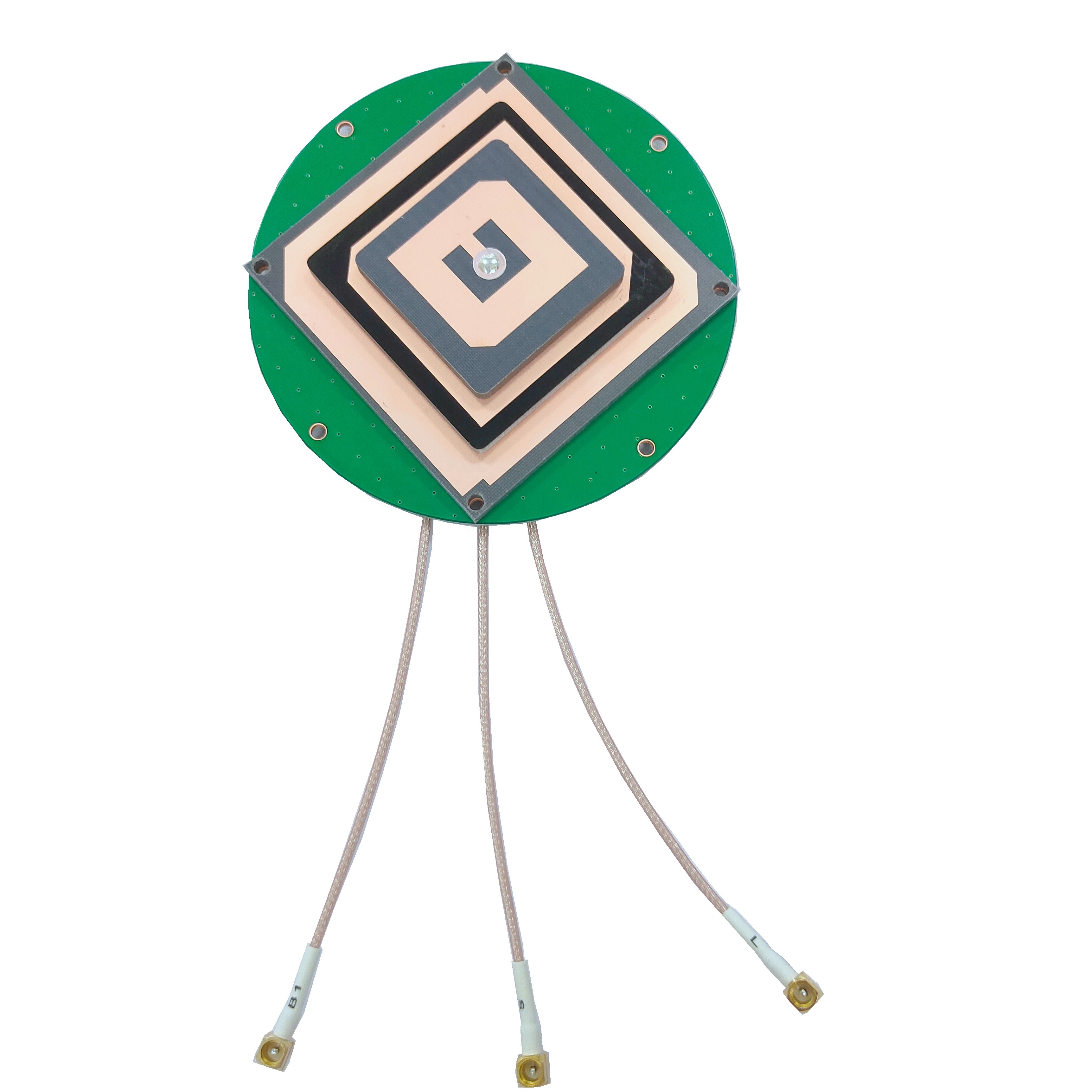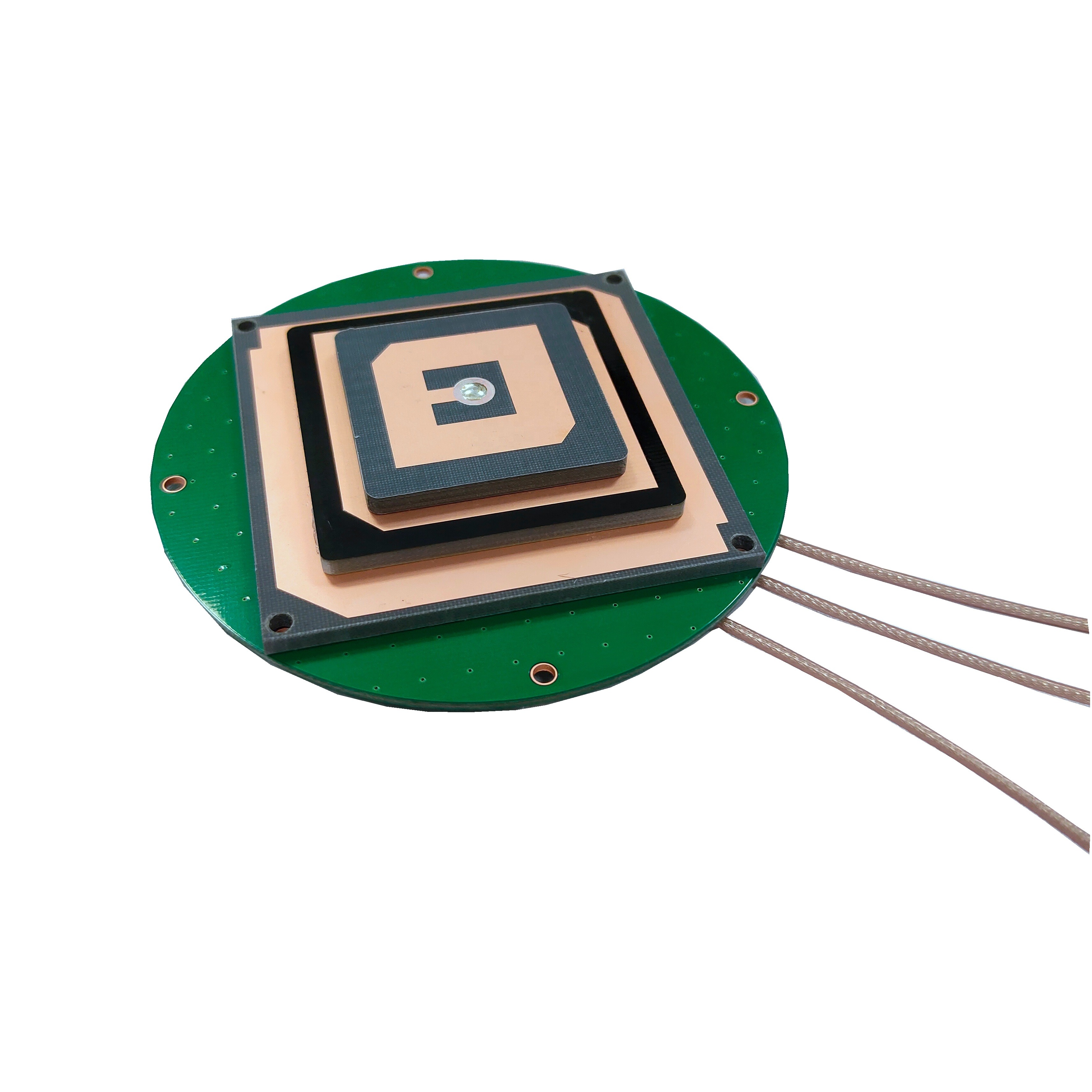Applications
Multi-constellation precision surveying GNSS antennas are deployed across industries where accuracy, reliability, and global coverage are critical:
Cadastral and Land Surveying: These antennas are used to define legal property boundaries with centimeter-level precision, ensuring that land ownership records are accurate and dispute-free. In regions with complex terrain (e.g., mountainous areas of the Himalayas), the antenna’s ability to access multiple constellations ensures that even remote parcels of land can be surveyed reliably.
Construction and Infrastructure Monitoring: Construction firms use these antennas for staking out foundations, roads, and bridges, ensuring that structures are built according to design specifications. They are also used for deformation monitoring—tracking tiny movements (1–2 mm per year) in bridges, dams, and skyscrapers. The multi-constellation capability ensures that monitoring continues even if one constellation’s signals are blocked by construction equipment or temporary structures.
Agriculture and Precision Farming: In precision agriculture, these antennas guide autonomous tractors, planters, and harvesters, enabling precise seed placement, variable-rate fertilization, and efficient crop harvesting. The ability to operate in diverse environments—from flat farmlands to hilly vineyards—ensures that farmers can optimize yields regardless of terrain. For example, a vineyard in Tuscany can use the antenna to map soil variability with centimeter accuracy, ensuring that each vine receives the optimal amount of water and nutrients.
Environmental and Geoscience Research: Environmental scientists use these antennas to track changes in landscapes over time, such as glacial retreat, coastal erosion, or volcanic activity. In the Arctic, where GPS coverage is limited, the antenna’s ability to access GLONASS and Galileo signals allows researchers to monitor ice sheet movements with unprecedented precision, providing critical data for climate change studies.
Mining and Quarrying: Mining operations use these antennas to guide drilling equipment, monitor slope stability, and map ore deposits. In open-pit mines, where dust and heavy machinery can block signals, the multi-constellation capability ensures that positioning remains accurate, improving safety and efficiency. For example, a gold mine in Australia uses the antenna to track the movement of haul trucks, optimizing routes to reduce fuel consumption and increase productivity.
Future Trends
The development of multi-constellation precision surveying GNSS antennas is shaped by advances in satellite technology, materials science, and artificial intelligence:
Support for New Frequency Bands and Constellations: As GNSS constellations expand (e.g., BeiDou’s B3I band, Galileo’s E6 band), future antennas will support an even broader range of frequencies. This will enable better error correction—for example, using Galileo’s E6 band (1278.75 MHz) to mitigate ionospheric delays more effectively—and improve performance in challenging environments.
AI-Driven Interference Mitigation: Artificial intelligence (AI) and machine learning algorithms will be integrated into receivers to better detect and filter out interference. These algorithms will analyze signal patterns from multiple constellations to identify and suppress noise from sources like jammers or multipath reflections, further improving accuracy and reliability.
Miniaturization and Integration with Other Sensors: Advances in materials science (e.g., metamaterials) will enable smaller Miniaturization and Integration with Other Sensors: Advances in materials science (e.g., metamaterials) will enable smaller, lighter multi-constellation antennas without sacrificing performance. Metamaterials—engineered structures with unique electromagnetic properties—can manipulate signal propagation to achieve high gain in compact form factors, making them ideal for portable surveying tools and drone-mounted systems. Additionally, future antennas will be integrated with complementary sensors such as LiDAR, inertial measurement units (IMUs), and cameras. This multi-sensor fusion will compensate for temporary GNSS signal loss (e.g., in urban canyons or tunnels) by using LiDAR for spatial mapping or IMUs for motion tracking, ensuring continuous high-precision positioning.
Energy Harvesting for Extended Battery Life: To address power consumption challenges, future antennas will incorporate energy harvesting technologies. Solar panels integrated into the antenna’s radome, or RF energy scavengers that capture ambient radio waves (from cellular or Wi-Fi signals), will supplement battery power. This will extend the operational life of portable surveying equipment—such as backpack receivers used in remote areas—reducing the need for frequent recharging and improving fieldwork efficiency.
Quantum-Enhanced Positioning: Research into quantum GNSS receivers is paving the way for antennas that leverage quantum mechanics to achieve unprecedented accuracy. Quantum receivers use atomic clocks and quantum sensors to measure signal phases with near-perfect precision, minimizing errors caused by noise and interference. While still in early stages, quantum-enhanced multi-constellation antennas could eventually deliver millimeter-level accuracy, revolutionizing applications like micro-deformation monitoring of critical infrastructure.
Cloud-Native Data Processing: Future multi-constellation systems will rely on cloud-native platforms for real-time data processing and correction. Antennas will transmit raw GNSS data to cloud servers, where advanced algorithms (powered by edge computing) will process signals from multiple constellations, apply corrections, and return positioning results to the field in milliseconds. This shift will reduce the computational load on on-site receivers, enabling smaller, more energy-efficient devices while leveraging the cloud’s scalability for large-scale surveying projects.
Conclusion
Multi-constellation precision surveying GNSS antennas have redefined the standards of accuracy and reliability in geospatial measurement, marking a pivotal shift from single-constellation dependency to a more robust, globally capable approach. By integrating signals from GPS, GLONASS, Galileo, BeiDou, and regional systems, these antennas overcome the limitations of traditional models—delivering centimeter-level accuracy even in signal-challenged environments like urban canyons, dense forests, and high-latitude regions. Their design, optimized for broadband frequency support, low phase center variation, and weather resilience, ensures they meet the rigorous demands of professional surveying, where precision directly impacts project success, legal compliance, and safety.
The advantages of these antennas—enhanced reliability, faster ambiguity resolution, global coverage, and future-proofing—have made them indispensable across industries, from cadastral surveying that defines property boundaries to environmental research tracking climate-driven landscape changes. While challenges like higher costs, power consumption, and calibration complexity persist, ongoing innovations in materials, AI, and sensor fusion are steadily addressing these barriers.
Looking ahead, the evolution of multi-constellation precision surveying GNSS antennas will be shaped by miniaturization, quantum technology, and cloud integration—trends that will expand their utility to even more compact devices and extreme environments. As GNSS constellations continue to expand and mature, these antennas will remain at the forefront of geospatial innovation, enabling surveyors, engineers, and scientists to push the boundaries of what is possible in accurate, reliable measurement.
In essence, multi-constellation precision surveying GNSS antennas are not just tools—they are enablers of progress. They empower industries to build safer infrastructure, manage natural resources more sustainably, and resolve land disputes fairly, all while adapting to a world where precision and global connectivity are increasingly intertwined. As technology advances, their role in shaping a more accurate, data-driven future will only grow, solidifying their status as the backbone of modern geospatial measurement.




































































 Language
Language
 En
En Cn
Cn Korean
Korean

 Home >
Home > 







 18665803017 (Macro)
18665803017 (Macro)













